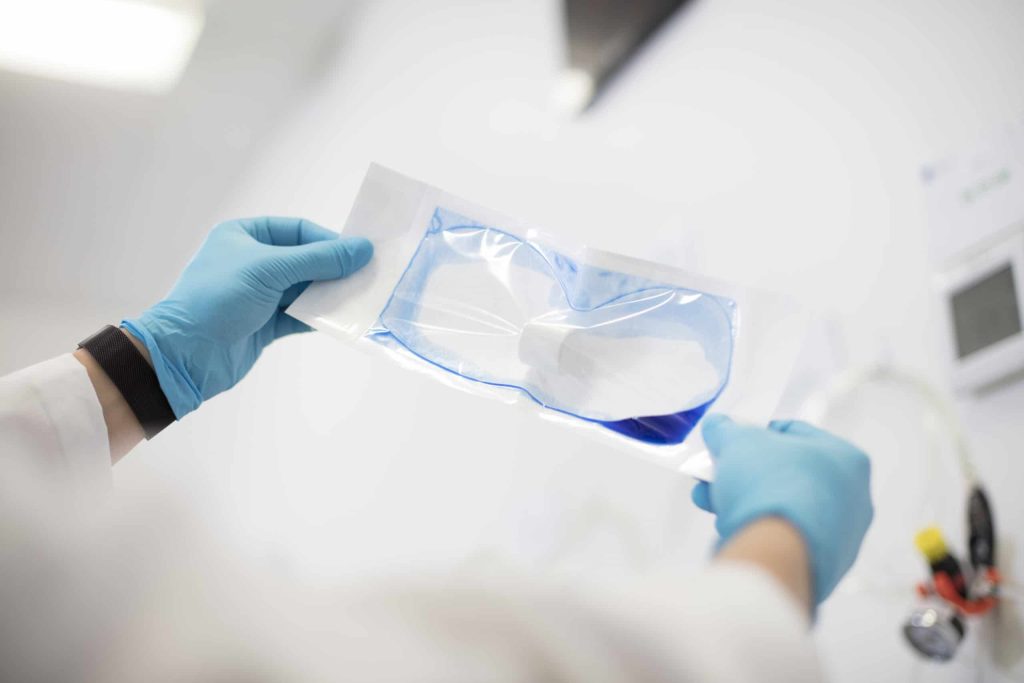

The purpose of integrity testing is to ensure that a package system’s sterile barrier remains intact after sealing or being exposed to a specific conditioning method (e.g. a transit simulation or accelerated aging). Since we perform integrity testing at different stages during packaging validation, it is important that the environment where we perform integrity tests is controlled so we can rule environmental deviations out as a contributor if we happen to discover failures.
In this blog, we will explain which integrity tests we perform during packaging validation and how we are able to control the integrity labs environment and why that is important.
Integrity Testing After We Develop Seal Process
There are certain quality requirements that must be met to ensure patient safety is guaranteed when a device goes to market. Early on when we are developing the sealing process, we perform our normal ASTM visual inspection per ASTM F1886 and, seal strength per ASTM F88, to understand how strong the package seals are. We will also perform a dye test that is specific to seal integrity, typically just testing the closure seal. If we are testing a form fill seal (FFS) pouch or rigid tray where we have created all the edge seals, we will test all edges.
We perform a dye leak test because it can target a specific seal. Dye leak test results give us confidence that:
- Our sealing process is strong enough for the product that is in the package
- The sterile barrier will be absent of small channels or voids in the seal that could potentially affect sterility
Channels are paths through the seal that could potentially allow microbes to enter the packaging. If the device is contaminated and is implanted into someone, they could get an infection. Depending on the risk level of the patient, an infection could be a life or death situation. This is a perfect example why integrity testing is important and the reasons it occurs at various points during a study.
Once we have confidence in our sealing process, we begin transit, accelerated and real time aging testing.
Integrity Testing After Transit Testing and Accelerated Aging Testing
Now that we’ve shaken, rattled, and rolled your samples, we will take them into the integrity lab and run similar integrity tests. This time we will evaluate the samples differently. For example, the dye test we perform when we are setting up the sealing process is just specific to the seal. After we do transit testing, we want to test the entire packaging system make sure the rigors of transit did not create a hole or abrasions someplace else, so we will perform the underwater bubble leak test.
We perform the same integrity testing for transit after aging is complete. This time however, we’re looking for integrity defects related to time, rather than events (such as drops or abrasion).
This brings us to why it is so important that we control the environment of our integrity testing lab.
Why Does PCL Ensure the Environment in Our Integrity Lab is Controlled?
The short answer is that it is just best practice. One aspect of testing that is a concern is repeatability and reproducibility. Repeatability is when “Joe” can perform the same test 10 times and get the same result each time. Reproducibility is when “Kathy” can come in and perform the same test Joe did and get the same result.
Keeping the room controlled at a certain humidity and temperature is one variable of the testing process that we can eliminate. Since we are testing your samples multiple times at different stages of the study, a controlled environment allows us to eliminate ‘environmental deviations’ from the equation which narrows down the potential cause of failure.
Environmental Characteristics We Can Control
The environmental characteristics we can control are temperature, humidity, and airflow.
When we set up the integrity room in our lab, we worked with our HVAC company to let them know we required tight controls on the environment of that room. The target conditions for our integrity room are 23°C (73.4°F) and 50% Relative Humidity (RH). What we are trying to simulate with these parameters is basic room temperature. This way, it is not too hot, too cold, too dry, or too humid. (Dare we say that we strive for the “Goldilocks” environment for our integrity room?!) Another way we can regulate the temperature is by making sure there are not too many lab techs in the room at one time.
Controlling airflow can be done by monitoring the exits and entrances. Doing this lessens the amount of people walking in and out of the room.
Are All Integrity Labs Environmentally Controlled?
Some labs are not accredited and do not have their integrity labs set to certain standards. Because PCL is an accredited lab that deals with many lifesaving and life changing medical devices and pharmaceuticals, we hold ourselves to a higher standard because there are more expectations of us.
There are varying degrees of labs, some are small, others do not have a lab, so they defer their projects over to a lab like PCL where everything is awesome! 😊